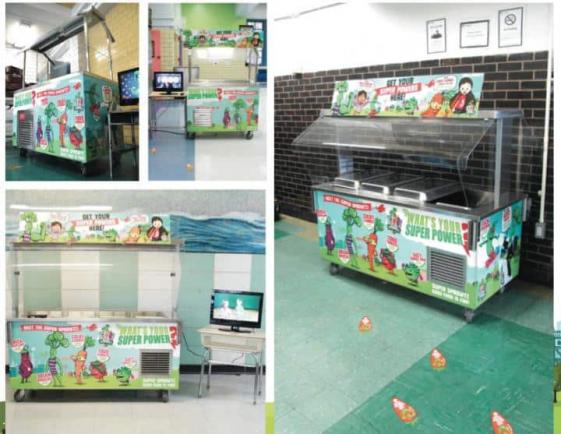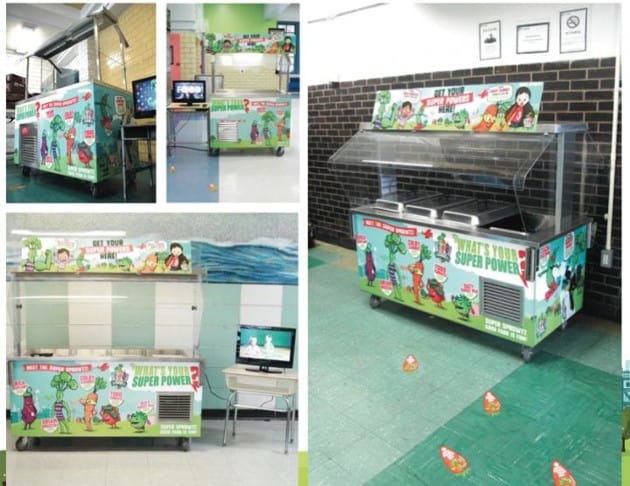
Creating a superhero squad of vegetables can help your child meet his or her healthy eating goals.
A new study from The Ohio State University has found that children who see cartoon characters, specifically superheroes, eat vegetables are more likely to eat those greens on their own.
In fact, using a new program called Super Sprowtz - which includes superheroes who get their powers from eating vegetables - kids are more likely to choose items from the salad bar when they pick their own lunch.
The research comes at a time when 1 in 6 children in the United States have been affected by obesity. Children who are obese are more at risk for heart disease and physical health issues, as well as colon cancer and early strokes, as announced by two studies this month.
"If we put the time and good resources into marketing healthy choices to kids, it can work," Andrew Hanks of The Ohio State University said in a statement. "These interventions don't need to be costly and there is a great opportunity to improve nutrition, performance in school and behavior as well."
To find this, Hanks and his research team tested this method at 10 different elementary schools in New York State. In each of the tests, the researchers put a banner at the bottom of the salad bar that included these superhero vegetables. In other schools, the cafeterias showed videos that included the Super Sprowtz squad. There were some schools where both methods were tested.
Each school had varying results, as 24 percent of children from schools that had the banner ate vegetables from salad bars. Meanwhile, in schools that showed both banners and the videos, 35 percent of children ate more veggies. Those with just the video weren't any more likely to try the salad bar.
Hanks said the tactic really only worked with young kids, and probably wouldn't work among older students. This study was also only limited to urban areas, so researchers remain unsure of whether it would work in rural settings or among the poor.
Of course, Hanks was quick to point out that not all teachers and faculty members are happy about encouraging marketing toward young students. Still, he supports the tactic when it leads to positive results, like increased vegetable consumption.
"Marketing can have both positive and negative effects," Hanks said. "But instead of avoiding it completely, we can harness the power of marketing to help us."
Still, marketing may not be the only way to inspire children to eat their fruits and vegetables. A study from Cornell University back in 2015 found that children who grow their own produce while in school are more likely to eat healthier foods. The study found those who ate salads jumped from 2 to 10 percent when those salads included veggies that the students had grown themselves.
For this study, researchers analyzed food selections of 370 students over three days, switching between vegetables that students grew and ones that the school grew.
A similar study in 2007 from Saint Louis University also found that preschool children who lived in rural areas were more likely to eat produce when it came from their own garden.
Other researchers suggest that children will be more likely to eat healthy foods if they're encouraged to take recess before lunch, as Deseret News National reported. When youngsters go outside for recess, they'll burn off calories and work up an appetite, which schools can help satiate by offering vegetables.
Hanks hopes similar tactics will be used in the future to inspire children to eat healthier foods.
"Salad bars could be met with more enthusiasm than a spoonful of cooked carrots on a lunch tray," he said. "If we can encourage kids to take vegetables of their own accord, rather than have someone put it there for them, they're much more likely to eat them."
Related stories
Is a healthy diet expensive? USDA says no
Q&A: The secret to raising healthy kids, according to USDA nutrition leader
Here's why you should take a closer look at your child's picky eating


